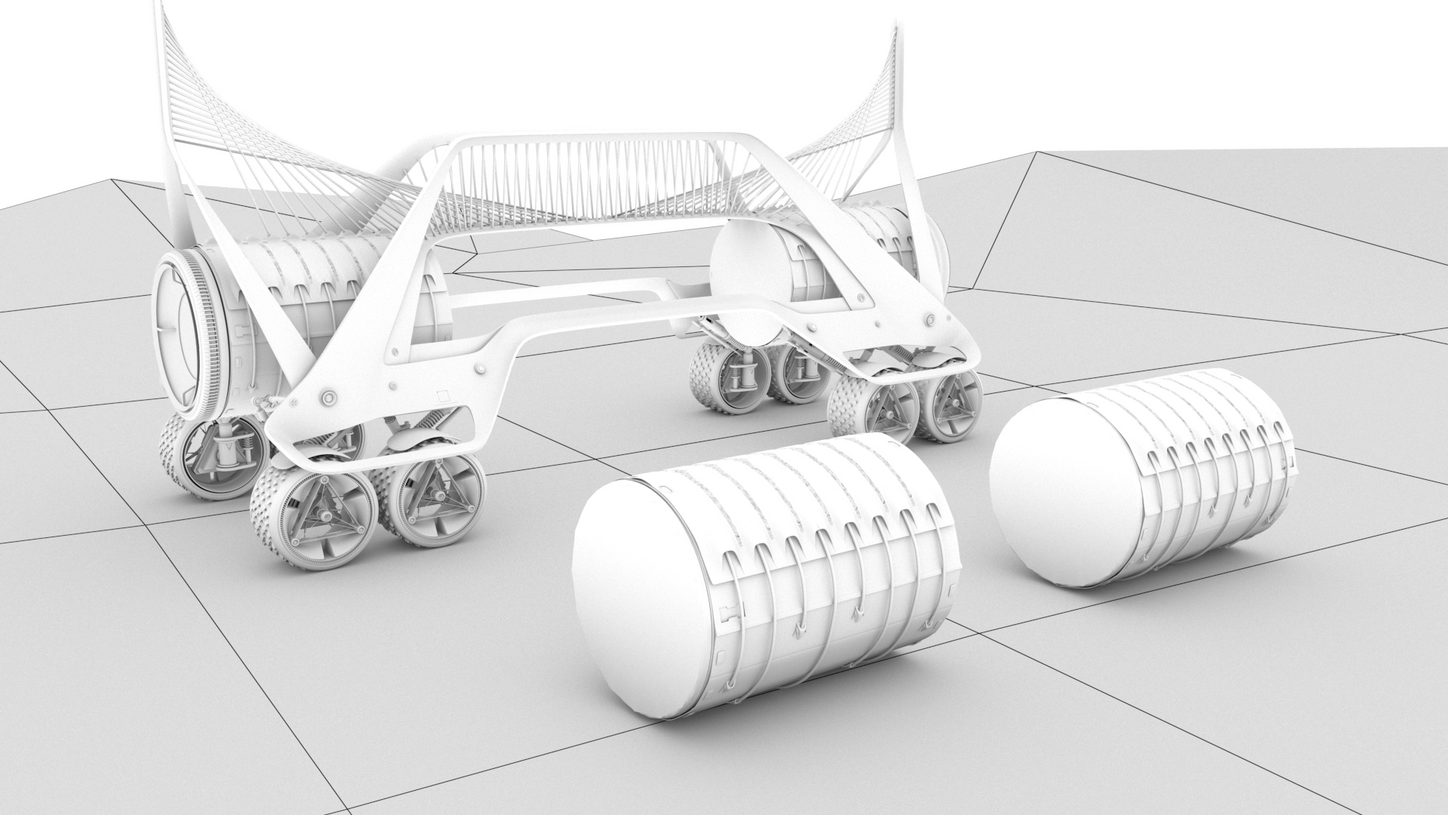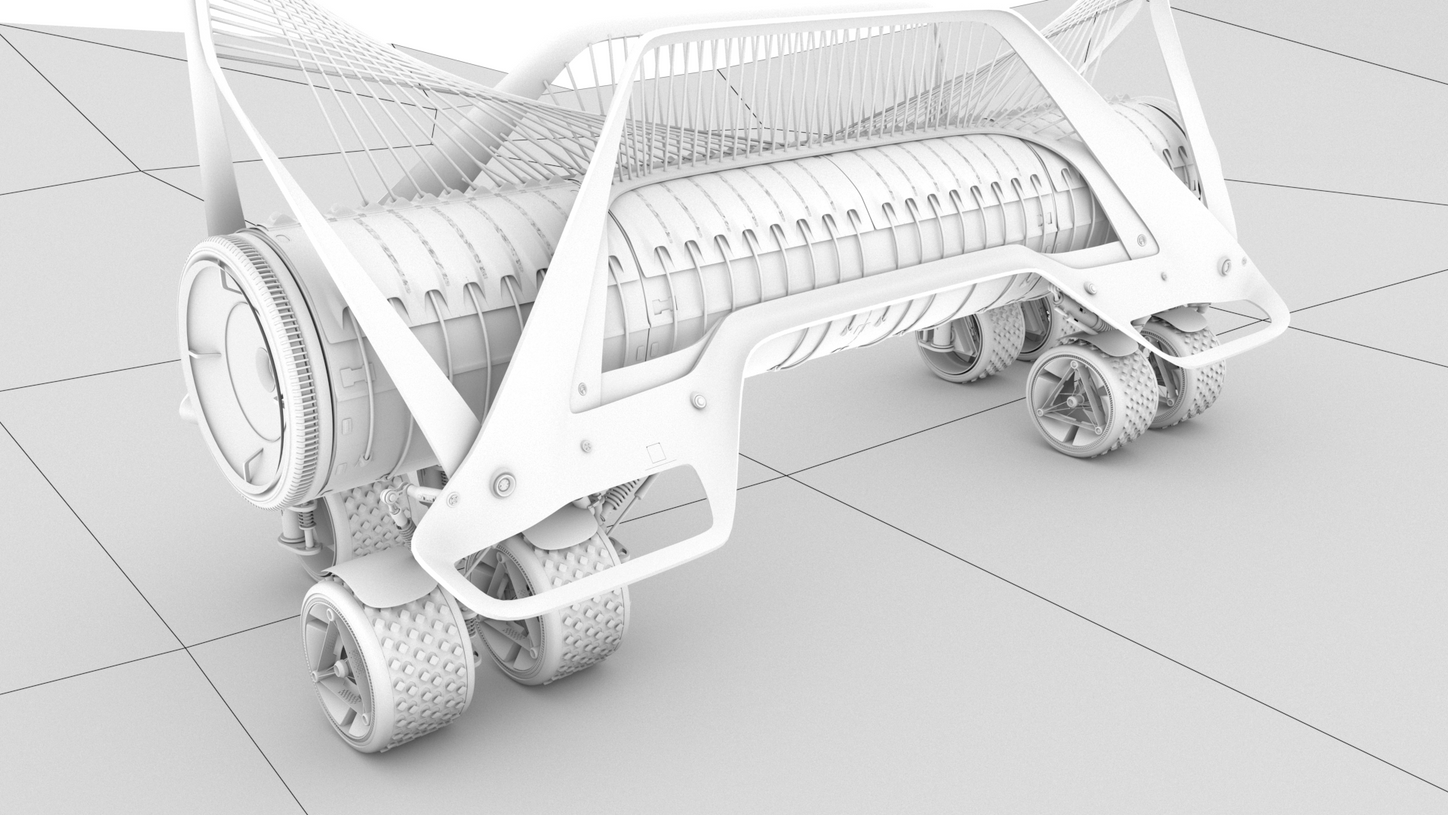+33 (0)7 70 09 38 73
nicolasbekhazi@gmail.com
+33 (0)7 70 09 38 73
nicolasbekhazi@gmail.com
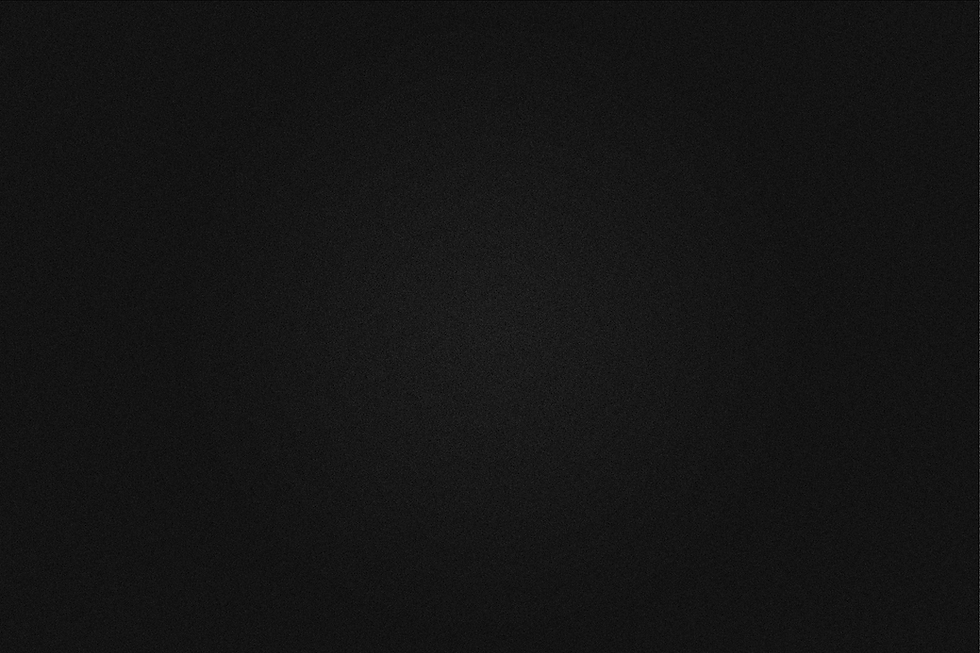
03/03
CH 3_
SOLUTION
What I did_ UX Design | Interaction Design | Interior Design | User Flow | User Story | Presentation

KEY HIGHLIGHTS
-
Independent wagons, working together as a train with the possibility to autonomously navigate the surface of the Moon.
-
Each wagon is comprised of detachable modules, allowing the caravan to be tailored to the specific needs of the mission.
-
Large, retractable translucent solar panels allow each wagon to harness the power of the sun and recharge its batteries.
-
Protects the crew from radiation, asteroids, the vacuum of space and the deadly temperatures.
-
Provides amenities for personal hygiene, physical exercise, R&R and, of course, work.
-
Navigates the roughest terrains with little to no effort.
Modular Wagons
A Lunar Caravan
Interior Design
For our Proof of Concept (PoC), we designed 5 interiors to showcase different usages and how we utilized the shape of the hull, lighting schemes, textures and various elements to create different moods, each pertaining to the function of the module, thus separating the compartments to allow the crew to fully focus on each intended usage and avoid cognitive overload.
Otherworldly Story
Thanks for checking this project out.
If you want to talk about this project, I'd be glad to connect with you.

I'm impressed that designers took the time and effort to research all those technical elements. I'm not sure that the numbers are correct in all of them but, mechanically, it could definitely hold up with a bit of additional research.
Quentin G.
Mechanical Engineer - working at Renault.
The project actually gives me hope for the future. That idea of planting bases like seeds in which humanity grows is very interesting. Besides, really enjoy that bridge-like approach, it helps sell the idea. It doesn't have enough weapons in my opinion but it still holds up.
Clément M.
Aeronautical Engineer - working at Dassault.
I've always found mobile homes interesting architecturally. You need to find a good balance of portable and comfortable. Now you tell me I could work on a space caravan? I'm in.
Laurent T.
Architect.
With the advent of more and more space-oriented missions, research In the domain will develop very rapidly. I'm curious to see how people would behave in such an environment. I have to give props to the attention to the perceived user's experience, it *feels* comfortable.
Philippe B.
Researcher - French Navy
Users Feedback
Social Relaxation

Moving Shades
These wooden boards are mounted on a mechanical rail, allowing them to move around the module's wall. As they revolve, they project shadows on the opposing couch.
With the screen behind the shades able to display various sceneries and landscapes, it creates the illusion of peering through a window, offering a proverbial opening and counteracting the feeling of claustrophobia and imprisonment.
Plants & Vegetation
Plants, even if fake, bring life to an interior. They provide a very strong sense of homeliness and comfort.
Furthermore, since green being a soothing color for the brain, having some vegetation aboard only stand to benefit the crew.
Multi Function Display
Like most screens in this vehicle, this one serves multiple purposes.
On top of displaying any kind of media or game for the crew to enjoy together, it also creates a warm and contemplative mood.
When on standby, it shows slow morphing shapes, the color of which is determined by the time of day by default.
Click on the Yellow Dots to get more info on the element
Note - The items in all modules were designed by our team in conjunction with interior architects. The goal here was to bring a maximum of comfort and relief to the crew without compromising efficiency and operability.
Living Module

Personal Storage
Each crew member has access to personal storage space, located above their sleeping capsules. These are secured and offer enough space to pack a few personal belongings. Dedicated storage areas provide ample room to store the rest of the required equipment.
Sleeping Capsules
Each member is assigned an individual sleeping capsule.
-
A roll-down, semi-rigid curtain offercs auditory and visual privacy.
-
The interior is covered with an immersive flexible screen, allowing the crewmate to manage light levels, consume media, set a specific mood and get their mind off the mission for quality sleep.
-
Due to the low gravity, the bed is a simple hammock with a few straps.
Hygiene Corner
The personal hygiene compartment is isolated from the rest of the cabin by a multi-paneled door, providing the user with privacy and calm as they use the facilities. Additionally, a white-noise generator provides further intimacy to the user.
Liquid waste is recycled to provide drinking water similarly to the ISS and solid waste is packed away in a container below the compartment, allowing for easy retrieval and treatment upon return to base.
Click on the Yellow Dots to get more info on the element
Note - The roof of the module is covered by a flexible Oled screen, replicating the 24-hour day/night cycle we're used to on Earth. By providing evolutive light intensity and color, we maintain a feeling of normality and allow the crew to keep track of time and stick to a relatively normal circadian rhythm.
Storage Module

Refrigerated Boxes
The ability to store items in a temperature-controlled compartment is both imperative for science but also a huge plus for any extended stay.
With the advances in microbiology and out-of-earth farming, fresh vegetables and meat substitutes will be relatively available for lunar colonists and being able to consume something other than MREs will greatly help with morale over long missions.
Technical Panels
Situated beneath the floor boards in all modules, the crew has access to all technical panels to maintain and manage them.
The color-changing lights bordering the panels provide both illumination and visual feedback in case something goes wrong to direct the attention of the crew.
Rotating Storage Space
To optimize the use of internal space and maximize reachability, some storage boxes are arranged along a rotating rail, allowing users to simply slide the boxes along the wall of the module to access different compartments.
Click on the Yellow Dots to get more info on the element
Note - The light strips on the ground are common to all pathways across the modules. They provide a familiarity and continuity of function but also serve the practical purpose of illuminating un-intrusively for low-light conditions. Additionally, they limit the space and alleviate feelings of claustrophobia (like in airplanes).
Sports & Recreation
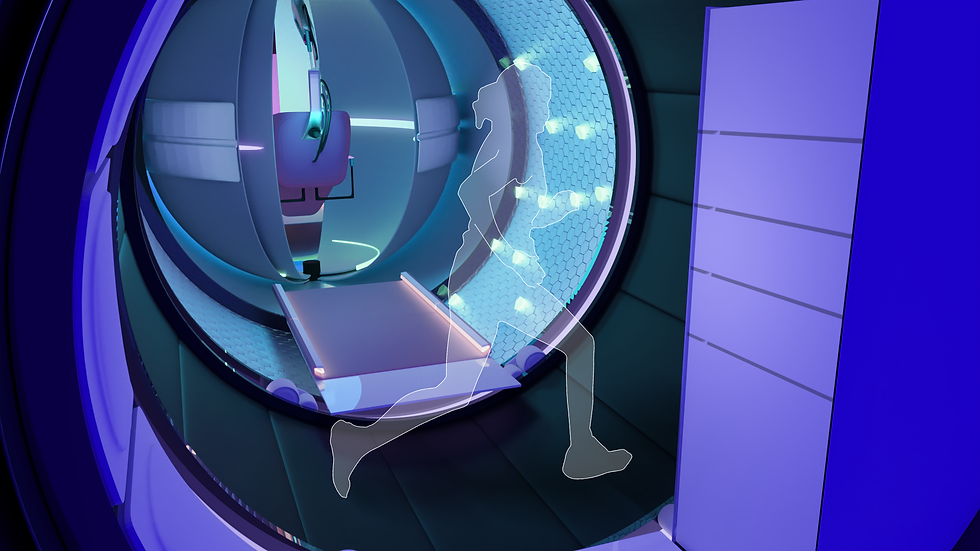
Dynamic Climbing-Wall
Diversifying the exercises available to the crew, this dynamic climbing wall revolves around the capsule, procedurally extruding holds for the user to grab as the panel rotates.
This offers a dynamic and ever-changing challenge to the user with the option to set difficulty level and speed, accommodating all levels.
Technical Panels
Situated beneath the floor boards in all modules, the crew has access to all technical panels to maintain and manage them.
The color-changing lights bordering the panels provide both illumination and visual feedback in case something goes wrong to direct the attention of the crew.
Treadmill
In keeping with the trend of fully immersive elements, this treadmill allows the crew to maintain a good cardio level, providing them with ports to fix retainers, simulating an earth-like gravity.
Click on the Yellow Dots to get more info on the element
Note - The upper half of the treadmill houses a retractable curved screen, allowing users to lower and use it when they're exercising and push it out of the way if they want to focus on their activity.
Control Station

Immersive Piloting Station
The pilot's seat is located in a closeable capsule, fully surrounded by ultra high definition screens, displaying a 360° view of the surroundings. It is placed on an articulated arm, allowing it to move about, either mimicking the movements of the vehicle or, on the contrary, negating them to offer a stable platform.
This is done to mitigate the risks of motion sickness on a very rough terrain.
From this station, the pilot can remotely control all vehicles attached to his caravan, which is why having an option to mimic the movement of another wagon is important, especially over long periods of time.
Technical Panels
Situated beneath the floor boards in all modules, the crew has access to all technical panels to maintain and manage them.
The color-changing lights bordering the panels provide both illumination and visual feedback in case something goes wrong to direct the attention of the crew.
Moveable Screens
This module serves as a mission control station, a piloting station and an overwatch tower.
The numerous mobile screens allow for efficient and customizable multi-monitoring and multi-tasking. The all-encompassing screen that occupies the top half of the module provides all important information to the vehicle commander, opens a proverbial window to the outside by displaying the feed from the multiple cameras around the chassis, and offer additional screen space should they require it.
Finally, it is from this station that the commander will stay in touch with the main base via relayed radio communications.
Click on the Yellow Dots to get more info on the element
Note - The upper half of the treadmill houses a retractable curved screen, allowing users to lower and use it when they're exercising and push it out of the way if they want to focus on their activity.


PROJECT 03
/Alba
_ with the CNES
UX|IX Design
/ALBA
Mobility on the Moon
4 months
5 people
5 domains
01 - Research (1.5 mo)
02 - Creativity (1 mo)
03 - Dev (1.5 mo)
3 - Transport Designers
1 - UXUI Designer (me)
1 - Digital Designer
User Research
Human Psychology
Neuroscience
Interior Design
User Story

This project was very different from everything I was used to working on. For starters, there are no current users to interview and collect feedback from and so I needed to work solely from behavioral, psychological and neurological studies.
Additionally, since there was no clear-cut device on which to create a tailored experience, I found myself working mainly on user stories, closed-space user experience design and cognitive loads.
My role
Imagine how Lunar Mobility would look like in 50 years
The brief was extremely interesting and offered us the opportunity to explore a topic that few designers get to dabble in. We needed to project ourselves in a completely new and extremely hostile environment 50 years from now and imagine how lunar colonists would travel the moonscape.
Our initial brief

Since the beginning of times, humans have looked up to their stellar neighbor. The relationship between our species and this celestial body has been undeniably profound yet remained constrained to long distance observations until 1969 when the first human set foot on the Moon. With multiple future missions planned, the first of which being NASA's Artemis program, we needed to understand the context in which our vehicle would operate.
To reduce the timeframe into a more manageable one, we fixed the date to 2051. Based on the different space agencies plans and goals, here's what the state of lunar colonization would look like:
-
There would be between 100 to 150 people residing on the moon on a 1 to 2 year(s) rotation cycle.
-
They would be based on the South pole in an autonomous and self-sufficient base.
Note - This location would've been chosen because it presents the smallest fluctuations in terms of temperatures and light from the sun, allowing them to utilize solar energy continuously.

At that point in time, the colonists would be aiming at exploring and establishing Forward Operating Bases (FOBs) further and further away from their main base.
Understanding the context
The constrains
An interesting part of working with an environment as hostile to life as that of the Moon is that it offers a platera of unique challenges to consider and overcome as a designer.
Environmental


The Atmosphere
Or lack there of.
Due to the small size of the Moon and its resulting low gravity, it doesn't possess an atmosphere. This entails a suite of problems for living organisms trying to colonize this planetary body. To sum it up, no atmosphere means no protection from solar radiation or from asteroids, extreme shifts in temperature, no breathable air and so on.
On Earth, our atmosphere protects us from the cosmic radiation that permeates space, especially this close from a star, and from asteroids falling to the surface as they disintegrate by falling through thicker and thicker air.
Furthermore, our atmosphere allows us to breathe freely and regulates the temperature. On the Moon, temperatures range from -255°C to +122°C.

As mentioned briefly in the Resources Section above, humans need air, water and food to survive. Additionally, and especially for long term missions, they need to be able to maintain proper hygiene, including waste treatment, personal cleanliness and sleep.
Studies have shown that low hygiene is not only -and obviously- a health hazard, but also a morale killer. If one doesn't maintain a clean and healthy living environment, it leads to extremely deteriorated performances and may ultimately lead to depressive states.
Additionally, good sleep is paramount for sustained efficiency and mental health. This was a major concern for the astronauts on the ISS (which goes through approximately 16 sunrises and sunsets per 24h) but also for submariners (who have to live with no visual connection to the outside world, thus entirely missing the day-night cycle).
Basic Needs
Oxygen, Water, Food, Sleep, Hygiene.
Human
Innumerable studies have been conducted on the different needs for humans operating in isolated conditions. This famously includes astronauts on board of the ISS, but also submariners, sailors on long hauls, scientists living in the Antarctic etc. After going through those documents, we've been able to simplify the needs of any human taking part in a long mission in an isolated environment into 5 pillars.
Why go back?

Being the first nation to reach the moon again would allow its leaders to send a powerful
message, not only to their people, but to the world. They would prove their technological, social and economical superiority over their competitors.
This would be akin to what we witnessed during the Cold War, but with some new faces around the table.
Power
Influence & Politics
Space is going private with more and more privately owned companies like SpaceX, Blue Origin and Virgin Galactic shaking the landscape of space exploration by virtually making it accessible to anyone.
But also to prevent (or assure) a monopolization of the Moon’s rare resources that could be sent back to Earth like rare metals and Trihydrogen.
Money
Resources & Monopole
Science profits from economical and political interest to advance.
Going to the Moon would allow us to study the geological past of the Earth, test equipment for future space exploration in real conditions, develop new technologies, study outer space with little to no interference and, most of all, to use it to launch space exploration missions.
Science
Study & Expand
Having understood both the environmental constrains and the human consideration we had to tackle, we needed to understand the reasons behind going back, the motivation for investing time, money and manpower to returning to the Moon and establishing a permanent base there.
The answer is three-fold.
01/03
CH 1_
GLOBAL RESEARCH

02/03
CH 2_
DESIGN METHODOLOGY
Survival
Crew Sanity
Mobility
Utility
Relaxation
As a UX Designer working with transportation designers and engineers, my role was to build the entire user story and associated micro scenarios, UJMs, emotion maps and the overall user flow within the vehicle.
To do so, I first broke down the 5 pillars into user-centered principles. I then further reinforced each of those principles with actionable elements in the form of key words and concepts and tied them together, providing the team with a clear overview of the steps to take.


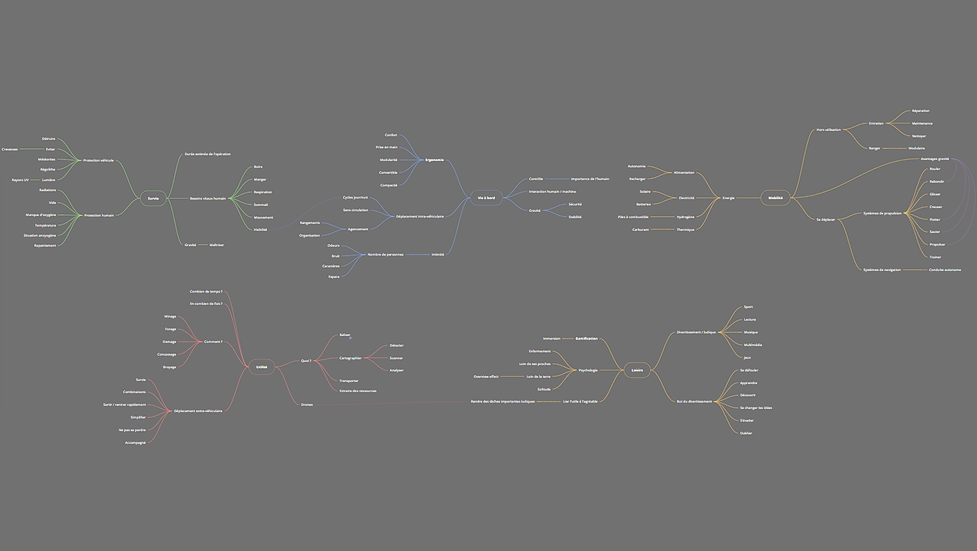
Core Breakdown
User Stories / Flow
With the core broken down and the user story in mind, we needed to proceed with a User Centric mentality.
Since we were designing a vehicle that needed to host humans for extended periods of time, one aboard which they would eat, clean themselves, sleep, work and relax in, we had to ensure the dimensions and elements' placements were coherent and ergonomic.
To achieve that, we contacted Interior Architects and worked with them to build a template that conformed to the usability norms in interior design. After a few interview and coworking sessions, we designed plans for a standard living module, made to host two users at the same time with alternating sleep schedules.
The cylindrical form of the module was chosen because it offered the most protection for the crew from all directions, allowed for a very modular interior space and provided us with the best compromise between size and usability, allowing us, amongst other things, to utilize rotating elements that would be able to be moved around to offer different utility depending on placement.
It is important to keep in mind that, quite obviously, there are no approachable past or current users to base a study on. Therefore, we needed to make approximations and go through all the material written on the different topics to come up with our own conclusions.
Since we were closely working with the CNES, we were able to propose those conclusions to far more knowledgeable people than ourselves and get a good grasp on what was ahead.
As a refresher, we were tasked with imagining a Lunar vehicle that would help humans conquer our celestial neighbor. Based on all the constrains listed above, we needed to create a vehicle that respected those 5 pillars.
Designing a theoretical user experience.
This allowed me to then utilize this framework to create multiple user stories and deduce a clear userflow from them.


What I did_ Psychological Research | Sociological research | Neurological Research | Interviews | Interior Space Design | Presentation


